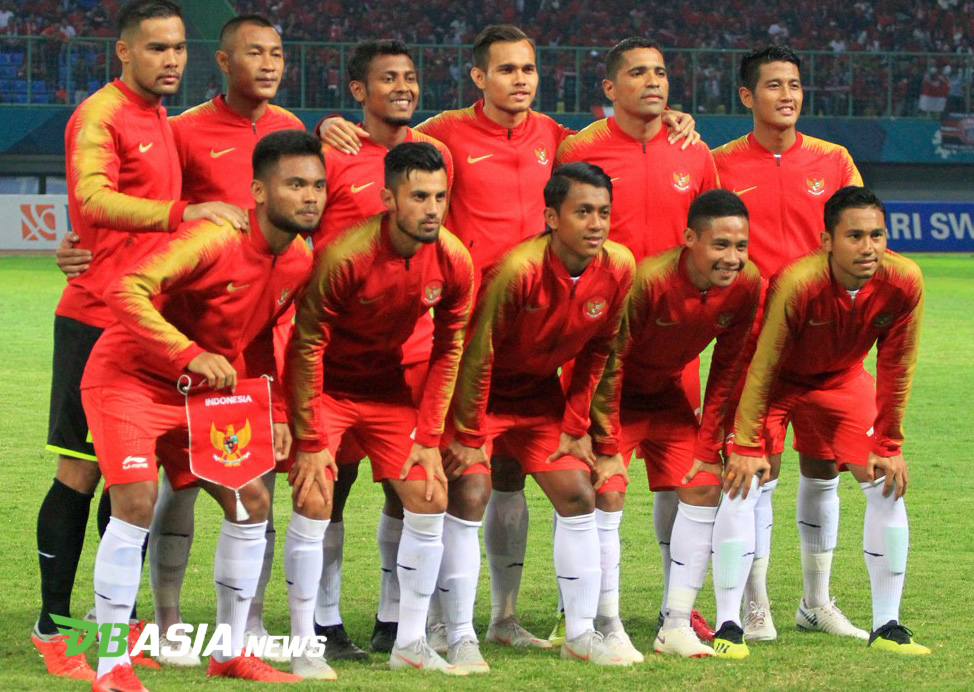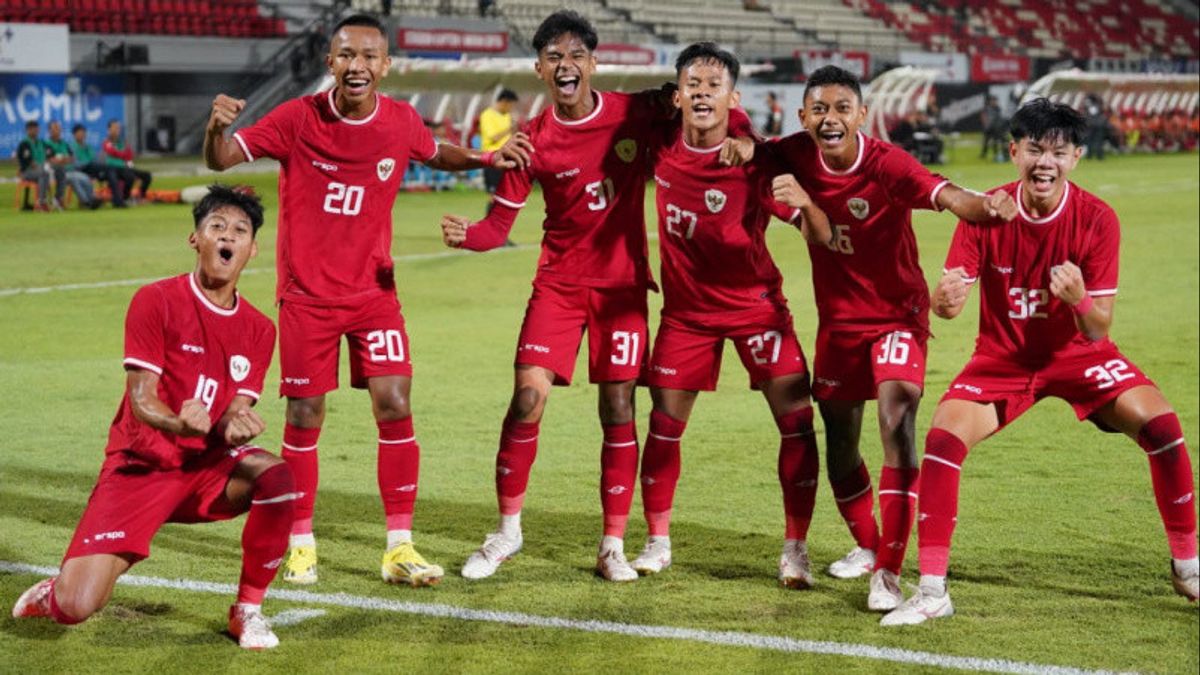
The Crucible of Ambition: Navigating Indonesia’s National Team Friendly Schedule on the Path to Glory
The roar of the Gelora Bung Karno stadium, the vibrant sea of red and white, and the unwavering passion of the Garuda supporters – these are the hallmarks of Indonesian football. In recent years, under the astute guidance of head coach Shin Tae-yong, the Indonesian national team has embarked on a remarkable journey of resurgence. From the depths of FIFA rankings to securing a historic spot in the AFC Asian Cup, and consistently challenging higher-ranked opponents, the trajectory is undeniably upwards. Central to this upward climb, beyond the competitive qualifiers and major tournaments, lies a meticulously planned and strategically executed friendly schedule. These often-underestimated encounters serve as the crucible where tactics are forged, squad depth is tested, and the team’s ambitions are truly refined.
Indonesia’s strategic approach to friendlies is not merely about accumulating FIFA ranking points, although that remains a crucial aspect. It’s about comprehensive development: fostering tactical understanding, building chemistry among a diverse squad, integrating new talents, and acclimatizing players to the high-intensity demands of international football. With major tournaments like the AFC Asian Cup and the ongoing FIFA World Cup Qualifiers looming large, every friendly match becomes a vital piece of the puzzle, a dress rehearsal for the grand stage.
The Strategic Imperative of Friendlies
For a nation like Indonesia, which is still striving to consistently compete at the highest echelons of Asian football, friendly matches are indispensable for several key reasons:
-
Tactical Refinement and Experimentation: Shin Tae-yong’s system is fluid, demanding high pressing, quick transitions, and tactical versatility. Friendlies offer a low-stakes environment to test new formations, try out different player combinations in specific roles, and work on set-piece routines without the immense pressure of competitive fixtures. It’s here that the coaching staff can identify weaknesses and fine-tune strengths.
-
Squad Cohesion and Integration: The Indonesian squad is a melting pot of local league talents, European-based diaspora players, and naturalized individuals. Building seamless understanding and chemistry among these diverse groups takes time. Friendlies provide invaluable minutes for these players to gel, understand each other’s movements, and develop on-field communication. It’s also where new naturalized players can be fully integrated into the team’s system and culture.
-
Player Assessment and Development: Beyond the starting eleven, friendlies are crucial for assessing squad depth. They offer opportunities for fringe players to stake their claim, for returning players from injury to regain match fitness, and for promising young talents to gain vital international experience. This continuous assessment helps STY identify who is ready for the rigors of competitive matches.
-
FIFA Ranking Points: While not the sole objective, improving FIFA rankings is vital for better seeding in tournament draws, potentially leading to more favorable qualification groups. Playing against opponents of varying strengths allows PSSI to strategically target points while also providing diverse challenges.
-
Building Momentum and Confidence: A string of positive results in friendly matches can significantly boost team morale and confidence heading into competitive fixtures. It reinforces the coaching staff’s philosophy and provides tangible proof of progress.
A Glimpse into Indonesia’s Hypothetical Friendly Schedule (Next 12-18 Months)
While the exact friendly schedule is dynamic and subject to change based on opponent availability, logistical considerations, and the evolving needs of the coaching staff, a projected blueprint can be envisioned, reflecting the strategic priorities for the Indonesian national team. This hypothetical schedule assumes FIFA Matchday windows are fully utilized and balances challenging encounters with opportunities for experimentation.
Phase 1: Post-Asian Cup Reflection & World Cup Qualifiers Preparation (March – June)
-
March FIFA Matchday (2 Matches):
- Opponent 1 (Home): A lower-to-mid ranked Asian team (e.g., Myanmar, Singapore, Hong Kong).
- Objective: Re-establish tactical fundamentals post-Asian Cup, provide minutes for players who saw less action, and test new tactical variations. Focus on offensive patterns and pressing intensity.
- Location: Jakarta (Gelora Bung Karno) – to reconnect with home fans and utilize familiar surroundings.
- Opponent 2 (Home): A mid-ranked Asian team or a strong ASEAN rival (e.g., Thailand, Vietnam, Uzbekistan).
- Objective: Step up the intensity, test defensive solidity against a more potent attack, and assess the squad’s ability to transition quickly. This match would be a litmus test for players vying for starting spots in the upcoming World Cup Qualifiers.
- Location: Surabaya or Solo – to spread the national team’s presence and engage fans across different regions.
- Opponent 1 (Home): A lower-to-mid ranked Asian team (e.g., Myanmar, Singapore, Hong Kong).
-
June FIFA Matchday (2 Matches):
- Opponent 1 (Home): A team from a different confederation (e.g., Mauritius, Tanzania, or a lower-ranked African/Oceanian team).
- Objective: Introduce an unfamiliar playing style, challenge players to adapt quickly, and broaden the team’s international exposure. This would also be an opportunity to give extensive minutes to promising U23 players.
- Location: Bali or Bandung – leveraging tourist destinations and passionate local fanbases.
- Opponent 2 (Home/Away): A higher-ranked Asian team (e.g., Bahrain, Oman, Tajikistan).
- Objective: Provide a significant challenge, identify areas for improvement under high pressure, and simulate the intensity of World Cup Qualifier matches. If away, it also helps in acclimatizing to travel and different playing conditions.
- Location: Jakarta (GBK) if home, or a neutral venue if away to minimize travel burden for the opponent.
- Opponent 1 (Home): A team from a different confederation (e.g., Mauritius, Tanzania, or a lower-ranked African/Oceanian team).
Phase 2: World Cup Qualifiers Mid-Cycle & Squad Building (September – November)
-
September FIFA Matchday (2 Matches):
- Opponent 1 (Home): A regional rival with a similar playing style (e.g., Malaysia, Philippines).
- Objective: Focus on specific tactical nuances, such as breaking down compact defenses or counter-attacking efficiently. Also, a chance to build confidence and reinforce regional dominance.
- Location: Jakarta (GBK) – utilizing the electric atmosphere to galvanize the team.
- Opponent 2 (Home): A strong Central Asian or West Asian team (e.g., Kyrgyzstan, Lebanon, Palestine).
- Objective: Test the team’s resilience and tactical discipline against physically robust and technically sound opponents. Ideal for assessing the backline and midfield battle.
- Location: Jakarta (GBK).
- Opponent 1 (Home): A regional rival with a similar playing style (e.g., Malaysia, Philippines).
-
October FIFA Matchday (2 Matches):
- Opponent 1 (Home): A mid-to-high ranked team that plays a different system (e.g., Syria, Jordan, North Korea).
- Objective: Adaptability and problem-solving on the pitch. This is where STY can see how players react to unexpected challenges and adjust their game plan.
- Location: Solo or Surabaya – maintaining geographical diversity for fan engagement.
- Opponent 2 (Away): A higher-ranked Asian team, potentially a World Cup participant from previous cycles (e.g., Iraq, UAE, China).
- Objective: Crucial test of character and quality away from home. Exposure to top-tier Asian opposition in their backyard prepares the team for critical away fixtures in qualifiers.
- Location: Opponent’s home stadium.
- Opponent 1 (Home): A mid-to-high ranked team that plays a different system (e.g., Syria, Jordan, North Korea).
-
November FIFA Matchday (2 Matches):
- Opponent 1 (Home): A team that offers a specific tactical challenge (e.g., a highly defensive team or a very offensive one, perhaps from West Asia like Yemen or Afghanistan).
- Objective: Refine specific attacking or defensive strategies. If World Cup Qualifiers are ongoing, this friendly might be tailored to prepare for a specific upcoming opponent’s style.
- Location: Jakarta (GBK).
- Opponent 2 (Home): A strong team from East Asia or a non-Asian confederation (e.g., Chinese Taipei, Cambodia, or an Oceanic team like New Zealand).
- Objective: Maintain competitive rhythm and potentially give more minutes to squad players who need match fitness.
- Location: Jakarta (GBK).
- Opponent 1 (Home): A team that offers a specific tactical challenge (e.g., a highly defensive team or a very offensive one, perhaps from West Asia like Yemen or Afghanistan).
Phase 3: Pre-Tournament Final Preparations (Early Next Year)
- Pre-Tournament Training Camp & Friendlies (e.g., January/February before a major tournament):
- Opponents (2-3 Matches): Varying strengths, often played behind closed doors or with limited fan access.
- Objective: Final tactical adjustments, injury prevention, physical peaking, and building team spirit in a focused environment. Opponents might be selected to mimic the playing styles of group stage rivals.
- Location: Centralized training camp (e.g., Turkey, South Korea, or a suitable facility in Indonesia).
- Opponents (2-3 Matches): Varying strengths, often played behind closed doors or with limited fan access.
Key Players to Watch During Friendlies
The friendly schedule also offers a spotlight on crucial individuals:
- The Established Core: Players like Asnawi Mangkualam, Rizky Ridho, Marc Klok, Witan Sulaeman, and Egy Maulana Vikri will be vital for maintaining tactical discipline and leadership. Their form in friendlies is indicative of the team’s overall readiness.
- The Rising Stars: Marselino Ferdinan and Pratama Arhan, already fan favorites, will continue to hone their skills against diverse opposition. Their development is key to Indonesia’s long-term success.
- The Naturalized and Diaspora Contingent: Players like Elkan Baggott, Ivar Jenner, Rafael Struick, Justin Hubner, Jay Idzes, Nathan Tjoe-A-On, and Thom Haye, amongst others, will use these friendlies to further embed themselves in the team’s system, build rapport with teammates, and demonstrate their consistency. Their performances can significantly elevate the team’s quality.
- New Faces: STY is known for his willingness to blood young talent. Friendlies are the ideal platform for promising U20 and U23 players to earn their first senior caps and prove their worth.
The Bigger Picture: Beyond the Friendly Scoreline
While results in friendlies are desirable for confidence and ranking, the true victory lies in the lessons learned and the progress made. A loss against a higher-ranked opponent, if it exposes tactical flaws that can be corrected, is more valuable than an easy win that masks underlying issues. The PSSI and Shin Tae-yong’s team management will be meticulously analyzing every pass, every tackle, and every tactical decision.
The friendly schedule is a testament to Indonesia’s ambition. It’s a carefully constructed pathway designed to elevate the Garuda squad, not just for the immediate challenges of the World Cup Qualifiers and the AFC Asian Cup, but for a sustained period of competitiveness on the international stage. Each friendly match, whether a grand spectacle at the Gelora Bung Karno or a tactical exercise behind closed doors, contributes to the grand narrative of Indonesian football’s ascent. The journey is long, but with strategic planning and unwavering support from the passionate fans, the Garuda is poised to soar even higher.



